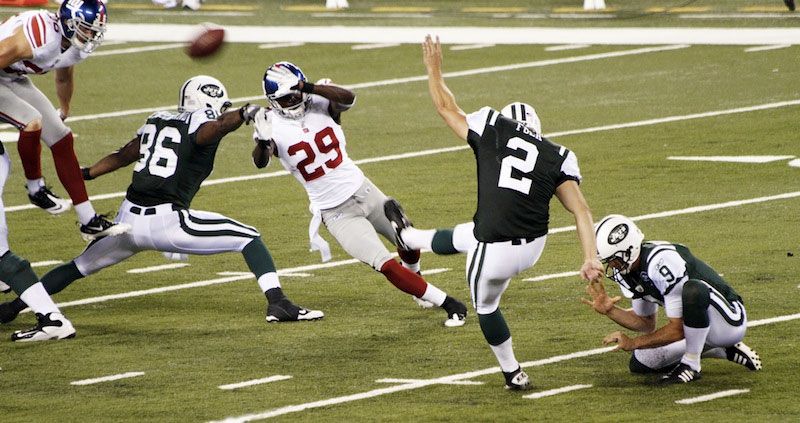
NFL Lawsuit Settlement Sets Up Fund for Head Injuries

Retired National Football League players and their families will be able to apply for compensation to cover some of the costs of living with diseases resulting from head injuries, thanks to the result of a lawsuit settlement announced today.
In the settlement, which was for $765 million total, the NFL said it would allocate $675 million to a fund that would compensate retired players who can prove they suffer from dementia, Alzheimer's, Lou Gehrig's disease, or other conditions that result in cognitive disability, according to NBC News. An additional $75 million will be allocated for players' medical exams, and $10 million for research and education. The settlement was in response to lawsuits filed by more than 4,500 retired players, though any retired player will be eligible for compensation. The NFL denied that it misled players about the health effects of head injuries, as was charged by the plaintiffs.
The type of brain damage that can occur as a result of being a professional football player has received increased attention in recent years. Researchers at Boston University found signs of a brain disease called chronic traumatic encephalopathy (CTE) in more than 30 deceased professional football players as well as five living football players. Several players who committed suicide — including Junior Seau, Dave Duerson and Ray Easterling — also had the disease. Other studies have found a link between the number of concussions a player sustains and an increased risk of depression.
Sign up for the Live Science daily newsletter now
Get the world’s most fascinating discoveries delivered straight to your inbox.

Rachael is a Live Science contributor, and was a former channel editor and senior writer for Live Science between 2010 and 2022. She has a master's degree in journalism from New York University's Science, Health and Environmental Reporting Program. She also holds a B.S. in molecular biology and an M.S. in biology from the University of California, San Diego. Her work has appeared in Scienceline, The Washington Post and Scientific American.











